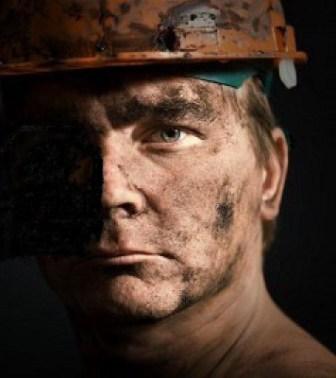
Thermal coal, which is the cheapest and most common type of coal, is burned to generate steam that powers turbines and produces electricity for either public grids or for large-scale industrial use. Metallurgical coal, on the other hand, is used as a fuel and as a reducing agent (coke) for smelting iron ore in a blast furnace; as such, it is also often referred to as coking coal or steelmaking coal. Metallurgical coal needs to be low in sulphur and phosphorus so these elements do not migrate to the metal during steel making.
Coal is mined in over 100 countries, and on all continents except for Antarctica. The largest reserves are found in the USA, Russia, China, India and Australia. The world’s largest coal producers are China (48%) and the United States (15%) and almost all production is used for domestic needs. On the export side, Australia (26%) is the largest exporter of coal followed by Indonesia (24%). But Indonesia may not be a reliable source of inexpensive coal. Power projects that had planned to get coal from Indonesia are yet to find a solution to a new law that may effectively increase the cost of Indonesian coal. The new regulation says coal sold from the country is to be indexed to the international price and revised annually.
After the earthquake in Japan, some investors are looking towards coal to “pick-up the slack” associated with the possibility of decreased energy output caused by the reduction of nuclear energy programs around the world. But some think this is simply a temporary blip on the energy radar as many countries will reinstate nuclear power as key energy source once the public’s concern subsides.
MiningFeeds.com
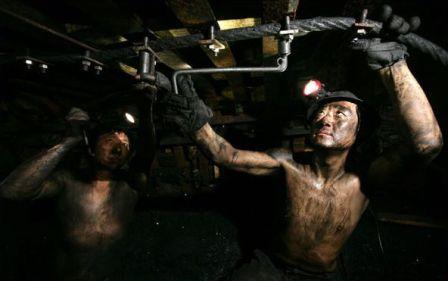
China’s seemingly insatiable demand for raw materials has fuelled a bull market in commodities since 2001. And coal, has literally fuelled the fires of industrial development in China. The coal industry in China is, by far, the largest in the world. But did you know it is also the most deadly? The Chinese coal industry is the most dangerous in the world for deaths resulting from accidents and disease. Mr. Tang, a Representative of Pingding Mountain Coal Miners’ Rights in Henan, noted, “The majority of local coal mine workers (at Pingding Mountain) suffer from pneumoconiosis. My friends and relatives have all contracted this illness. Many have suddenly died from this illness due to lack of air.” There are over 100,000 coal miners working at Pingding Mountain alone. Pingding Mountain is located in the province of Shanix which produces about 25 percent of China’s annual coal requirements.
Many countries in the Asia Pacific region, including China, are major buyers of coal. From an industry perspective this is important because freight charges make up a considerable percentage of the cost of imported coal. On a global scale, China is a low cost producer when compared to other major coal-producing countries. Coal production costs are low in China because labour costs are low. Labour only accounts for about 20 percent of the total production costs of Chinese coal mines, whereas in more developed countries, labour sometimes constitutes as much as 60 percent of production costs. With China at the heart of the international coal industry we begin our watch list with a company that looks to supply Chinese demand from neighbouring Mongolia.
1. Prophecy Coal Corp. (TSX-V:PCY)
It has been a very eventful year for Prophecy Coal. A $42 million public financing, the spin-off of sister company Prophecy Platinum (TSX-V: NKL) and now the challenge of managing growth in the face of volatile markets. Lately, the markets have had a major impact on the company’s share price. Prophecy is currently trading at $0.44 per share which yields a market cap of roughly $90 million. Currently, with $64 million in shares of Prophecy Platinum, $40 million in property and equipment; and a little less that $10 million in cash on the books (as at June 30th, 2011), you are getting the company’s Mongolian coal assets and Canadian mineral properties for, well, less than free.
In July, 2011 Prophecy Coal announced a defensive plan to give the company’s shareholders and directors time to consider alternatives should a hostile takeover attempt emerge. This was primarily in response to the released of a new resource estimate by Prophecy Platinum for its Wellgreen property in Yukon. Shares of Prophecy Platinum surged after the news from $0.60 to $6.00 per share and subsequently greatly increased the asset value of Prophecy Coal. Prophecy Platinum is currently trading at $2.82.
Prophecy Coal reports more than 1.4 billion tonnes of thermal coal on two properties in Mongolia and began selling coal to Russian and Mongolian buyers this year. Situated next to China, the world’s largest coal consumer, Prophecy’s President & CEO, John Lee, thinks Prophecy is well positioned to take advantage of China’s ever-growing energy requirements. We sat down with Mr. Lee to discuss the company’s eventful year and to find out what is on the horizon in 2012 – CLICK HERE – for the interview.
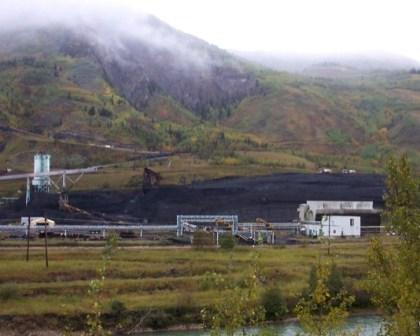
2. Grande Cache Coal Corp. (TSX:GCE)
Mining coal is only part of the equation. Once coal is mined from open pit and underground operations at Grande Cache Coal’s Smokey River Coalfield in Alberta it needs to be processed into “clean coal” for steelmaking. Heavy media cyclones are used to clean the raw coarse coal and flotation is used to wash the fine raw coal.
After the coal is washed the raw coarse coal is separated into clean coal and rejects. The drained coarse clean coal is dewatered in centrifuges and discharged to a separate conveyor. The drained coarse reject material is conveyed to a discard bin and removed by truck to the company’s disposal facility. The fine raw coal is separated into clean coal and fine refuse in a bank of flotation cells. The clean coal froth is passed to a vacuum disc filters for dewatering. The filter cake is then discharged from the disc filters and combined with the clean coarse coal on the clean coal conveyor for transport to the thermal dryer, where the coal is dried.
The thermal dryer, located in a separate building, is fuelled with natural gas. Dried clean coal from the dryer is then conveyed to a clean coal stockpile where it is readied for rail transport to the Westshore Terminals in Vancouver for export. Agreeably, the entire process is somewhat “dry”. Regardless, in fiscal 2011, the company produced about 1.55 million tonnes of clean coal.
Year over year Grande Cache Coal has struggled in 2011. Production was down slightly and the company recently cut its production targets for 2012. While fiscal first-quarter earnings released in August were well below the street’s expectations as costs increased. But with increased production still expected for 2012, Canaccord Genuity analyst Gary Lampard sees diluted earnings per share improving significantly in the second quarter and maintained a “buy” rating (although he cut his target by $0.50 to $11.25). Shares of Grande Cache Coal are currently trading at year lows and can now be had for $3.52.
For 5 Coal Stocks to Watch – Part 2 – CLICK HERE.
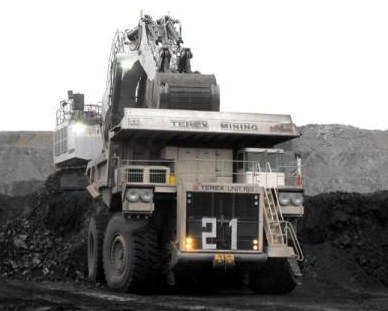
3. SouthGobi Resources Ltd. (TSX:SGQ)
SouthGobi Resources is focused on exploration and development of metallurgical and thermal coal deposits in Mongolia’s South Gobi Region. The company’s flagship coal mine, Ovoot Tolgoi, is producing and selling coal to customers in China. Ovoot Tolgoi is located in southern Mongolia, approximately 40 kilometres north of the Chinese border. Ivanhoe Mines is SouthGobi Resources’ largest shareholder and owns approximately 57% of the issued and outstanding shares of the company.
In August, SouthGobi Resources set a new monthly record of 441,665 tonnes of coal shipped which was a substantial increase over shipping levels from a year earlier. On an annualized basis, the company is producing at 5.3 million tonnes of coal per year and is on track to meet its production targets for the upcoming quarter.
SouthGobi, along with its major shareholder Ivanhoe Mines, have paved the way for business in Mongolia. And although the process hasn’t always been easy, the Mongolian government is proactive and pro-business. Prime Minister Sukhbaatar Batbold, age 48, has worked hard to open the doors to foreign investment. The country is only 20 years removed from the days of Soviet control and is sorting out its path towards a healthy free market economy which includes the world’s smallest stock exchange (Mongolian Stock Exchange). Established in 1991, stock exchange officials hoped the exchange would help to privatize the majority of state assets. Fast forward to 2010, the MSE reported 336 listed companies with a combined market capitalization of roughly $1 billion. SouthGobi Resources has openly expressed interest in listing on the diminutive exchange to validate the direct benefits associated with foreign ownership in Mongolia. MiningFeeds.com connected with SouthGobi’s President & CEO Alexander Molyneux to learn more about the company’s plans – CLICK HERE – for the exclusive interview.
4. Teck Resources Ltd. (TSX:TCK.B)
Teck is the largest producer of steelmaking coal in North America and the world’s second largest exporter of seaborne steelmaking coal. With five mines in British Columbia and one in Alberta, coal is a proclaimed cornerstone of Teck’s diversified mining business. The majority, approximately 90%, of Teck’s coal is exported for steel production. Shipped by rail to the coast of British Columbia the coal is exported to Asia, Europe and South America. The company’s largest markets in Asia have traditionally been Japan, Korea and Taiwan, but the company expects that China will emerge as a significant importer of steelmaking coal as it continues its process of urbanization. Coal accounted for approximately 59% of Tech’s gross profits before depreciation and amortization for the three month period ending June 30th, 2011.
The global sell-off in commodities has spark outright fear in the equity markets over the past few weeks. The declining prices of base metals, crude oil and coal have resulted in some questioning whether we are perhaps heading into another global recession. In its latest quarterly Global Economic Outlook, Fitch Ratings revised down its growth forecasts for all major advanced economies. Maria Malas-Mroueh, Director in Fitch’s Sovereign team stated, “Fitch does not project a ‘double-dip’ in its baseline global economic projections. However, the likelihood of a recession has increased, as intensified financial market volatility could further amplify risk aversion behaviour and lead to tighter credit conditions.”
And in a recent poll released by Bloomberg, most global investors predict Chinese growth will slow to less than half the current pace by 2016. China’s gross domestic product rose 9.5 percent last quarter. Unfettered by negative headlines, last Wednesday Teck’s board approved a $475 million spending program to modernize its four-decade-old copper mill at Highland Valley and earmarked another $210 million for their Trail lead and zinc smelting and refining facility. “We still see strong demand for our products, particular our steel-making coal and our copper,” stated Teck spokeswoman Marcia Smith. Teck confirmed the company is in the best financial shape it’s ever been in contrast to the heavy debt it carried into the financial crisis of 2008. Shares of Teck Resources closed today at a yearly low of $28.69, down over $2.20 on the day, marking a healthy decline of 7.2%.
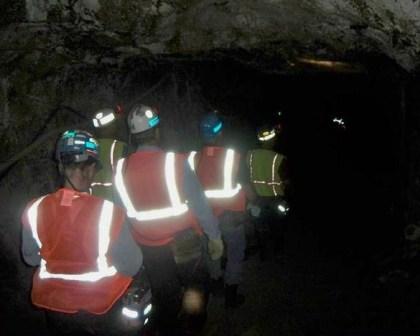
5. Cline Mining Corp. (TSX:CMK)
On August 9, 2011, Cline Mining welcomed the first commercial metallurgical coal shipment into rail cars from the bulk rail load-out facility at its New Elk mine. The company continues to ramp up metallurgical coal production at its flagship mine in southern Colorado with the plan to reach an initial level of production totaling 3 million tons annually by the first quarter 2012.
Cline is also developing its Lossan and Lodgepole metallurgical coal mine projects in British Columbia; the Cline Lake gold property Ontario, Canada; and its iron ore properties Bekisopa, Madagascar. As such, the company’s plate is pretty full. To support this junior miner, Cline has entered into a strategic corporate partnership with Mitsui Matsushima, a Japanese coal miner and conglomerate. Mitsui Matsushima is also a shareholder and, as reported by the company, is represented on Cline’s board of directors.
To complete the development of the New Elk coal mine which includes reinstalling the steel rail spur and financing working capital, Cline completed a prospectus offering of 31,372,000 common shares at a price of $2.75 per common share for total gross proceeds of $86,273,000 in June, 2011. Shortly after the offering the stock began to sell-off. Well know Canadian money manager Frank Mersch said Cline Mining was being “unduly punished” in the market downturn as reported by the Globe and Mail. At the time, Cline’s shares were trading at $2.40 and, about the company, Mr. Mersch said, “We think it could be a double.” Unfortunately for Cline Mining shareholders, Mr. Mersch would have been right if hedged his bet in the other direction. Since Mersch’s prediction the company’s shares are down more than 50% and are currently trading for $1.10 on the TSX Exchange.
For 5 Coal Stocks to Watch – Part 1 – CLICK HERE.
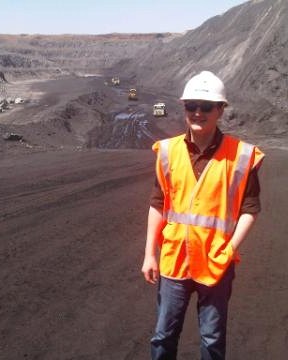
SouthGobi Resources is focused on exploration and development of metallurgical and thermal coal deposits in Mongolia’s South Gobi Region. The company’s flagship coal mine, Ovoot Tolgoi, is producing and selling coal to customers in China. Ovoot Tolgoi is located in southern Mongolia, approximately 40 kilometres north of the Chinese border. Ivanhoe Mines is SouthGobi Resources’ largest shareholder and owns approximately 57% of the issued and outstanding shares of the company.
In August, SouthGobi Resources set a new monthly record of 441,665 tonnes of coal shipped which was a substantial increase over shipping levels from a year earlier. On an annualized basis, the company is producing at 5.3 million tonnes of coal per year and is on track to meet its production targets for the upcoming quarter.
SouthGobi, along with its major shareholder Ivanhoe Mines, have paved the way for business in Mongolia. And although the process hasn’t always been easy, the Mongolian government is proactive and pro-business. Prime Minister Sukhbaatar Batbold, age 48, has worked hard to open the doors to foreign investment. The country is only 20 years removed from the days of Soviet control and is sorting out its path towards a healthy free market economy which includes the world’s smallest stock exchange (Mongolian Stock Exchange). Established in 1991, stock exchange officials hoped the exchange would help to privatize the majority of state assets. Fast forward to 2010, the MSE reported 336 listed companies with a combined market capitalization of roughly $1 billion. SouthGobi Resources has openly expressed interest in listing on the diminutive exchange to validate the direct benefits associated with foreign ownership in Mongolia. MiningFeeds.com connected with SouthGobi’s President & CEO Alexander Molyneux to learn more about the company’s plans.
For someone looking at investing in a coking coal company for the first time, what are some of the key components to consider from both a company and industry perspective?
From an industry perspective people should recognize coking coal is a “late cycle” commodity from a China perspective. China was broadly self-sufficient until around three years ago. This is much later than for copper or iron ore for example. What this means is that we haven’t yet seen the full impact that China’s demand requirements will have on the market and pricing for coking coal. In a slower growth environment, China will still increase its demand for coking coal by 7-8% per year for the rest of this decade. However, its industry really only has the capability to grow around 3-4% per year and even that growth will be endured through rapidly rising costs and continued safety issues etc. The next point from an industry perspective becomes India. Coking coal for India is much more of an upfront issue. India will meet almost all of its coking coal needs through imports. When I look at the situation, it makes me absolutely adamant that coking coal will outperform the broader commodities sector this decade because China and India will have to triple the internationally traded coking coal market just to meet their own needs.
From a company perspective the key is “location, location, location”. Coking coal is a bulk commodity and so the ability and cost of transportation to the market is much more relevant. In the case of base metals, if it’s 80:20 for geology: location, then coal is 40:60. Now this is what’s driving the emergence of new coking coal producers. The grand claims of Canada and USA becoming big suppliers to China’s coking coal needs just hasn’t come to pass. The publicly listed companies doing business there grandstand about China demand but Mongolia, which is right next door to China, is becoming the key supplier. In the month of August for example, our mine in the South Gobi desert alone sold three times the coking coal to China than all of Canada did! Mongolia is now meeting around 45-50% of China’s coking coal import needs. SouthGobi Resources’ mines are the closest coal resources to China. We are 45 kilometers away from China and less than 50 kilometers off Chinese rail. It’s a huge advantage.
Comparing apples to apples, how does SouthGobi’s direct mining cash costs compare to other coal miners in Mongolia and China?
Before China became a force in the global coking coal market, Mongolia’s coking coal deposits were relatively constrained from an infrastructure perspective. As a result some very low cost resources were never mined, including ours. Our current mine, Ovoot Tolgoi has a life of mine strip ratio of around 4 BCM of waste per tonne of coal. Our direct mining cash costs average around US$20/t… that’s around one third to one quarter of costs in Australia, Canada or China.
What are your production rates as we head towards the end of 2011 and what are your target production rates for the end of 2012?
Our target for the calendar year of 2011 is to sell between 4 and 4.5 million tonnes. We’ve really had very smooth production this year and so our run of mine coal production is now running at around 6 million tonnes annualized right now in line with our ramp-up expectations. We have 13 new 240 tonne haul trucks to commission between now and the end of 2012 plus another Liebherr 996 excavator. We will likely finish 2012 with annualized run of mine production in the region of 8 to 9 million tonnes.
There were some issues with increased sulphur content in some of your coal as reported in November of 2010 and quality control measures were implemented. Have these issues now been fully dealt with?
It wasn’t increased sulphur… it was that the sulphur in product coal from on some higher ash seams was higher than the geological work had suggested. It certainly came as a surprise when we started mining that coal for the first time in 2010. The problem is resolved though. The first step was to ‘mitigate’ the problem. That’s all we could do with the resources we had. We started screening the coal to reduce the ash from 25% to around 18% so then the customers started buying that coal because we improved the value of it in a different way. Since then we’ve raised the price of it by 40% and we sell it every day. The other thing is that our sulphur reduces with depth. That coal is already around 0.15% lower sulphur than last year. We will be processing all our coal from the start of 2012 through a combination of a dry coal handling facility at Ovoot Tolgoi and a wet washing facility that will further treat any coals that remain above 10% ash. Every tonne of coal we sell will very soon be in-spec semi-soft coking coal with low to medium sulphur.
It has been rumoured for quite some time that your majority shareholder Ivanhoe Mines has been looking for a buyer for some (or all) of its stake in SouthGobi. Has this affected your ability to operate the company in any way or is this irrelevant to your ongoing business activities?
My feeling is the rumour may have been over done a bit. Regardless, it doesn’t affect our business. We have our own operations, our own capital and continue to move ahead aggressively with our development.
In short, why should an investor take a serious look at SouthGobi Resources as we head into 2012?
We’re in absolutely the right commodity. We are a first mover in Mongolia and are benefitting from new infrastructure and market development, which is increasing the price of our coal. With our growth and introduction of processing, we have an enormous ability to generate reliable cash flows that’s just not priced into our stock.
This interview is featured in the article 5 Coal Stocks to Watch – Part 2 – CLICK HERE to read more.

On March 19th, 1997 Michael de Guzman, the exploration manager for would-be miner Bre-X, jumped from an Alouette helicopter flying eight-hundred feet above the Indonesian jungle. The official version of the events state that de Guzman was suffering from hepatitis B and a tormented conscience. He left behind a few hastily scrawled suicide notes, a Rolex watch and a slew of unanswered questions and speculation – his body was never found.
In the days that followed, it was revealed that de Guzman had carried out the biggest mining fraud in modern history. Shares of Bre-X surged from just pennies to more than $280 a share. But when the Indonesian government brought in mining giant Freeport-McMoRan to confirm the deposit, they found nothing. In all, investors were swindled out of $6 billion.The Busang deposit in Borneo, Indonesia, which at the time was rumoured to be the largest gold deposit in the entire world, contained only trace amounts of gold.
The irony in the historic Bre-X swindle is that Indonesia actually does boast the world’s largest gold mine. The Grasberg Mine, located in the province of Papua, Indonesia, is the largest gold mine in the world. And the Grasberg mining district is believed to contain the world’s largest recoverable gold reserve. It is majority owned through a subsidiary by Freeport-McMoRan Copper & Gold (NYSE: FCX). Annual production from the Grasberg Mine is estimated at over 58,000,000 grams of gold; along with 600,000 tonnes of copper; and 170,000,000 grams of silver.
These days, a regulatory overhaul of Indonesia’s mining industry in early 2011 is likely to weaken the financial performance of companies operating there and it may also make the Asian nation less attractive for foreign investment. Instated in January, the new law aims to squeeze more revenue from the mining sector and secure domestic supplies of minerals such as coal and metals for their home market where demand is expected to surge.
The Indonesian government has set domestic coal consumption targets at 75 million tonnes for this year, which is thirty percent of total Indonesia coal production. It is yet to be determined which metal products will be included for the domestic market obligation. The new mining law, however, will require miners to process mineral products domestically by setting up their own smelters or using independent domestic smelters. There is a lack of processing capacity in Indonesia so, either way, the process is expected to slow output.
Recently, Xavier Jean, a Standard & Poor’s credit analyst stated, “Some (of the new) regulatory provisions have direct implications for the revenues, profitability, capital expenditure, and cash flows of mining companies in Indonesia.” He also said, “Besides increasing operating uncertainty for Indonesian mining companies, we believe the new regulations may also make the industry less attractive to foreign investors.”
Following a 10-year exodus of junior mining companies from Indonesia in the aftermath of the Bre-X scandal, Southern Arc Minerals (TSXV:SA) was one of the first Canadian junior exploration companies to return to Indonesia in 2005. Southern Arc management saw the mass departure from Indonesia as a unique window of opportunity. The company currently has four projects on the islands of Lombok and Sumbawa. Three of the projects are located on Sumbawa which hosts Newmont’s Batu Hijau mine. Newmont Mining (TSX:NMC) recently sold the final 7-per-cent divestiture stake in PT Newmont Nusa Tenggara subsidiary to an agency of the Indonesian government’s Ministry of Finance as required under the terms of the contract of work with the Indonesian government.
Intrepid Mines (TSX:IAU) is an Australian-based precious metals development and exploration company with primary operations in Indonesia. The companies lead project, Tujuh Bukit located on the island of Java, is reported to contain an inferred resource estimate of over two million ounces of gold and nearly eighty million ounces of silver. Another junior actively exploring a number of prospective prospects in Indonesia is East Asia Minerals (TSXV:EAS). The company owns a majority interest in 6 epithermal gold and porphyry copper-gold properties scattered throughout the island nation.
Challenger Deep Resources (TSXV:CDE) is an Alberta-based junior miner focused exclusively on coal in Indonesia, specifically in East Kalimantan. The company was established to take advantage of what management believes is “an under-exploited opportunity” in the region.
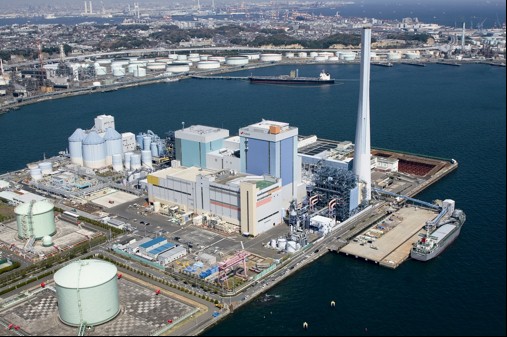
Thermal coal is gaining steam. When thermal, which is the cheapest and most common type of coal, is burned its steam powers turbines that generate electricity for either public electricity grids or for large-scale industrial use. In a recent analyst poll by Reuters, forecasts for average 2011 thermal coal prices were solicited from 22 analysts and industry players. The poll, which was conducted in February, 2011, was $30-37 a tonne higher than the predictions given a year earlier. From the survey, the median forecast for the black carbon delivered in Amsterdam-Rotterdam-Antwerp (the European benchmark) for 2011 was estimated at $121.00 a tonne.
Prices for thermal coal began to rise in December, 2010. Supply constraints were the culprit; wide-spread flooding in Australia’s Queensland State was the catalyst. Australia is the world’s number one exporter of coal (thermal and steelmaking) accounting for about 26.5% of worldwide exports. And then there was the devastating earthquake in Japan. Since then, the European benchmark has risen nearly 11% to $135 a tonne, a 2.5 year high.
On April 1st, global diversified mining giant Xstrata (LSE: XTA) and Japanese utility company Chugoku Electric settled an annual coal contract at record levels. The contract was ultimately settled for just under $130 per tonne, more than thirty percent higher than last year, despite the current weakness in coal demand caused by the earthquake in Japan. Several power plants were damaged in the disaster so some utilities deferred their cargoes to a later date.
Japan is the world’s largest thermal coal importer and, at some point, Japanese demand for power will recover as factories reopen and the country rebuilds itself. And with the possibility that nuclear power output will be constrained, coal-fired plants will have to work harder to produce more power. June through September is the country’s traditional peak months for electricity consumption and some industry experts predict Japan will require an extra 500,000 tonnes per month. On average, Japan consumes 10 million tonnes of thermal coal each month.
Some think the boom in imported thermal coal demand across Asia, led by Japan, China, South Korea and India, could last for the next several years. With industry experts bullish on demand, we take a look at a couple of Canadian listed thermal coal companies that could stand to benefit from these prognostications.
Coalspur Mines (TSX:CPT) is based in Hinton region of Alberta, Canada. Coalspur’s flagship coal project is the Vista Coal Project which, the company believes, has the potential to be one of the largest thermal coal mines in North America. The project is being developed to meet the expected growing energy demands from the Asia Pacific market. The Vista Coal Project has a NI 43-101 Measured and Indicated coal resource base of over 900 million tonnes. Coalspur is currently undertaking a bankable feasibility study on the project which is anticipated to be complete before the end of the year. The processing facility is expected to cost close to $1 billion. Coalspur recently announced a $55.5 million financing at $1.85.
Sherritt International (TSX:S), perhaps better know as a leader in the mining and refining of nickel and its energy operations in Cuba, a lesser known fact about Shirritt is that it’s the largest thermal coal producer in Canada. Sherritt operates seven mine-mouth mines in Alberta and Saskatchewan. These mining operations supply electricity generation companies with coal under long-term contracts. Annual production from Sherritt’s mine-mouth operations is estimated at 35 million tonnes. The company also produced 4 million tonnes of thermal coal from its mountain mining operations. On February 23rd, 2011 Sherritt reported fourth quarter net income of $81 million, or $0.27 a share, up from $48.3 million, or $0.16 a share, a year earlier. Sherritt’s shares closed the week at $7.65.

After the market closed yesterday, Teck Resources (TSX:TCK.B) released its Q1 2011 financial results. The rosy report included earnings of $461-million, or 78 cents per share. Adjusted quarterly profit was $450-million, which was more than double the $198-million reported in the first quarter of last year.
Because January floods ravaged Australia, the world’s number one exporter of coal, some expect steelmaking coal contract prices may rise to more than $300 a metric tonne. According to Daiwa Capital Markets, the floods, which have been described as the worst in a half-century, disrupted output from producers including BHP Billiton and Rio Tinto Group in Australia’s Queensland state. In a recent interview, Arun Kumar Jagatramka, Managing Director of India’s Gujarat NRE Coke noted, “Coking (steelmaking) coal price has been seeing a steady climb upwards for last six months. Coking coal benchmark price for the quarter April to June has been set at $200 compared to last year’s benchmark at $128 per tonne.”
Steelmakers in China are driving demand for coal. But analyst John Hughes of Desjardins Securities pointed out that it’s not just this predictable narrative that has pumped up prices, it’s overall global demand from steelmakers. Although China and India are by far the world’s largest importers, several other countries have emerged as substantial buyers, including South Korea, Taiwan and Malaysia. Demand from these emerging markets is expected to increase and absorb production from long-haul coal that originates in South Africa and Columbia.
“Once again we rely on Asian demand to be the driver for coal prices but if there were no issues on the supply side, demand from Asia would produce only a slower, steady rise in prices,” said Emmanuel Fages, an analyst with Societe Generale, in Paris. There are, however, issues on the supply side that could be a net-positive for Teck’s metallurgical coal interests. Teck CEO Don Lindsay recently told the Globe and Mail “We anticipate improved earnings from coal in the second quarter.” Investors, it seems, like the sound of that. Shares of Teck are currently up $2.77, or nearly 6% today.
If you would like to receive our free newsletter via email, simply enter your email address below & click subscribe.
CONNECT WITH US
Tweets
Tweet with hash tag #miningfeeds or @miningfeeds and your tweets will be displayed across this site.
MOST ACTIVE MINING STOCKS
Daily Gainers
 |
CMB.V | +900.00% |
         |
CCD.V | +100.00% |
         |
CASA.V | +30.00% |
         |
AAZ.V | +25.00% |
   |
RMI.AX | +25.00% |
   |
POS.AX | +25.00% |
         |
KGC.V | +20.00% |
         |
GDX.V | +20.00% |
         |
LPK.V | +16.67% |
         |
CCE.V | +16.67% |

 Follow us on Twitter
Follow us on Twitter Become our facebook fan
Become our facebook fan







